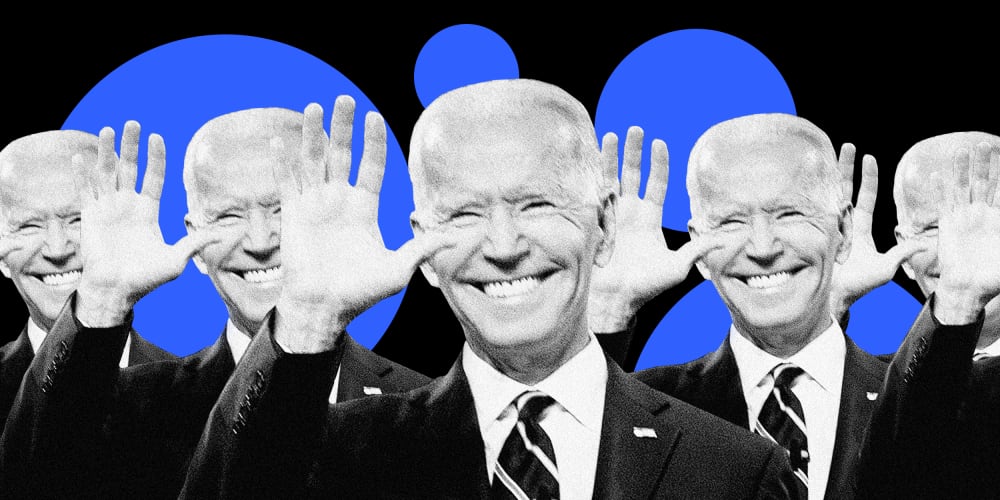As we careen toward Election Day, as much as I want to listen to the data, I can’t let myself stop obsessing over all of the unknowns that lurk between now and then.
By most tangible measures, former Vice President Joe Biden is in the final countdown to an electoral win, seeming to condemn President Donald Trump to a single term. National polling has been almost eerily consistent since Biden sewed up the Democratic nomination. As of Monday, the latest NBC News National Polling Average showed that Biden holds a 7.4 percentage-point lead over Trump — 51.3 percent to 43.9 percent.
National polls can be misleading, though — a fact that still lingers like a bruise on the amygdala from four years ago. Zooming in on the battleground states, though, the tightening we saw in Trump’s race against Hillary Clinton just isn’t at play here. In states that are necessities for Trump, it’s hard to see the gaps closing. According to the RealClearPolitics average, we’re seeing Biden up by 8.1 points in Michigan, by 5.4 points in Wisconsin and by 6.0 points in Minnesota. Those states — paired with Pennsylvania, where he’s up 4.8 — are enough to push Biden over the edge if the rest of the map remains the same from 2016. Biden, in a bit of confidence that some might call hubristic, declared on Monday that he’d win all three Midwest must-wins.
And states that once seemed out of grasp are apparently in play. Does anyone think for sure that Biden is going to win Texas? Not with any certainty. But the fact that we’re even talking about it — and that Biden’s running mate, Sen. Kamala Harris, is being sent to campaign there in the homestretch — is absolutely wild.
Part of the reason they’re able to devote resources to longer shots like Texas and Georgia — which Biden is visiting Tuesday — is the bonkers cash advantage the Biden camp has over the president’s re-election bid. October began with Biden sitting on a war chest of $432 million, versus $251 million in the Trump camp.
Trump has tried at recent rallies to spin this fundraising dip as a sign that he’s the less corrupt of the two candidates, since he’s not calling up companies and PACs to beg for money, even as he’s spent his entire term breaking down ethical barriers between the White House and the wealthy. He’s, in fact, being forced to spend time fundraising instead of campaigning to make up for his campaign’s having burned through roughly $1 billion.
That’s before we even get into the early voting numbers. NBC News’ data here, too, show an advantage for the Democrats thus far. Of the 55.5 million ballots already cast, 45 percent of those from voters whose party affiliations are known are from Democrats. The early turnout doesn’t exactly guarantee the results when votes are tallied next week. It is, though, votes in the bank that reduce the number of people who have to be turned out to the polls next Tuesday.
Of the intangibles, it feels like assured victory at the ballot box for Biden, even if the reporters and their editors don’t want to frame it that way. Politico recently noted that, if anything, the political media are doing everything they can to avoid stressing that narrative in these final days of the campaign:
“In normal times for normal candidates, the politician running significantly behind suffers from every news story starting with a dependent clause: ‘With time running out and supporters increasingly worried of an electoral debacle …’ Or perhaps: ‘Amid finger-pointing among campaign aides and despair among party allies … .’ Cumulatively, this creates a penetrating odor of death around a campaign before the actual death arrives.
“Generally, Trump has avoided this phenomenon. While there is lots of coverage illuminating the reasons he is in trouble, or even forecasting that defeat is significantly more probable than victory, the dominant storyline is far from, ‘Why even bother waiting for Election Day — let’s just admit this thing is over.’”

So, with all of these facts in hand … why won’t my heart stop pounding?
Psychologists at San Francisco State University found in a 2018 paper that the emotional aftershocks of the presidential race two years previously were severe enough in the young people they studied to resemble PTSD. The narrative then had been that Trump would suffer an ignominious, if narrow, defeat and we’d go about four years of a relatively boring second Clinton administration. Instead, as the researchers found, “the average stress score of students was comparable to the scores of witnesses to a mass shooting seven months after the event.”
That feeling is hard to shake, despite all the omens. “I am feeling anxious and trapped between a sense of unbridled optimism and sheer dread,” Abington Township, Pennsylvania, Commissioner Bill Bole told The Washington Post in a recent story. I understand that, and I feel the same.
That looming sense of catastrophe is only stoked when you pause to remember how hard the Trump campaign is hustling to ensure that the Electoral College map in 2020 looks as close to the one the president has memorialized in countless speeches and events since 2016. It has filed lawsuits in more than a dozen states to limit the number of ballots that can be counted. And a new Supreme Court justice whom Senate Republicans raced to seat and who has dodged any questions about how she’d rule during a disputed election awaits those cases.












